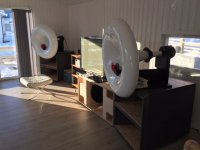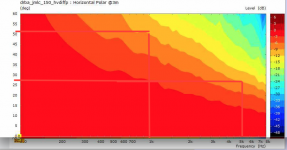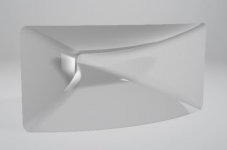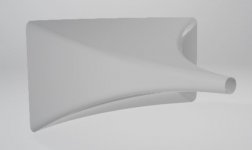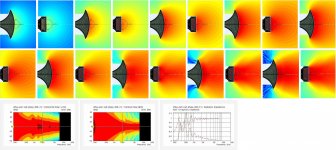That small tweeter horn most probably disturbs the response of the big horns.
I was advised that it isn't good to put things in the horn mouth...interesting pic though.
The on axis shading and reflection "disturbances" back into the throat the tweeter horn causes certainly are compromises, but with a "beamy" mid horn like that, there are a lot of compromises to choose from.That small tweeter horn most probably disturbs the response of the big horns.
The big horn's coverage at 5kHz (likely where the tweeter is crossed in) is only about half as wide as at 1kHz.
At 5kHz, just 27 degrees off axis, response is around 9 dB down-about half as loud as the on axis response.
Art
Attachments
The on axis shading and reflection "disturbances" back into the throat the tweeter horn causes certainly are compromises, but with a "beamy" mid horn like that, there are a lot of compromises to choose from.
The big horn's coverage at 5kHz (likely where the tweeter is crossed in) is only about half as wide as at 1kHz.
At 5kHz, just 27 degrees off axis, response is around 9 dB down-about half as loud as the on axis response.
Art
It is so boring that everyone only looks at the DI index as the only true metric.
Once you get the chance to listen to one of the old WE12a/WE13a horns do it! There are rare occasions with Silbatone presenting such horns. The sound traveling meters through the snail horn. Just listen to this! I am quite sure that you will never talk again about DI index as an important factor.
These simulation is the result of a design study for camplos very extreme requirements about loading to the lowest octave. I would say that 54 degrees coverage is not so bad.
Show us a better simulation for a horn that loads so low and please show us proper observation fields for a simulation as free standing horn allowing edge diffraction.
I'm looking for good drawings of WE15A. Anyone?
I'll look around, wondering if you can answer this question...The polars on the autotech website...at what distance are they measured?
1,5 meter (35m2 room). I'd like to make we15a replica and some sims - comparison with bent waveguides, Sato etc.
It is so boring that everyone only looks at the DI index as the only true metric.
Once you get the chance to listen to one of the old WE12a/WE13a horns do it!
..but the exit itself is much wider.
Really depends on listening distance (from the speakers) at that point. 😉
Sven Pesch on Facebook, European Triode Festival posted some old school horns with tweeters in an enclosure in the horn. Sorry, can't seem to post the link myself.
"Far field"...Measured on axis in the far field with 1 watt (4.0 VRMS, 16 ohms) input and referenced
to 1 meter distance
This would be my preferred poison as regards these type of horns.
This thread should be renamed Hornography 😉. There is an inherent beauty in the curves of those white ones which instinctively makes you think that they must sound good. Hard to believe they are DIY. Who made them?
For those who don't get which horn Studley's referring to:
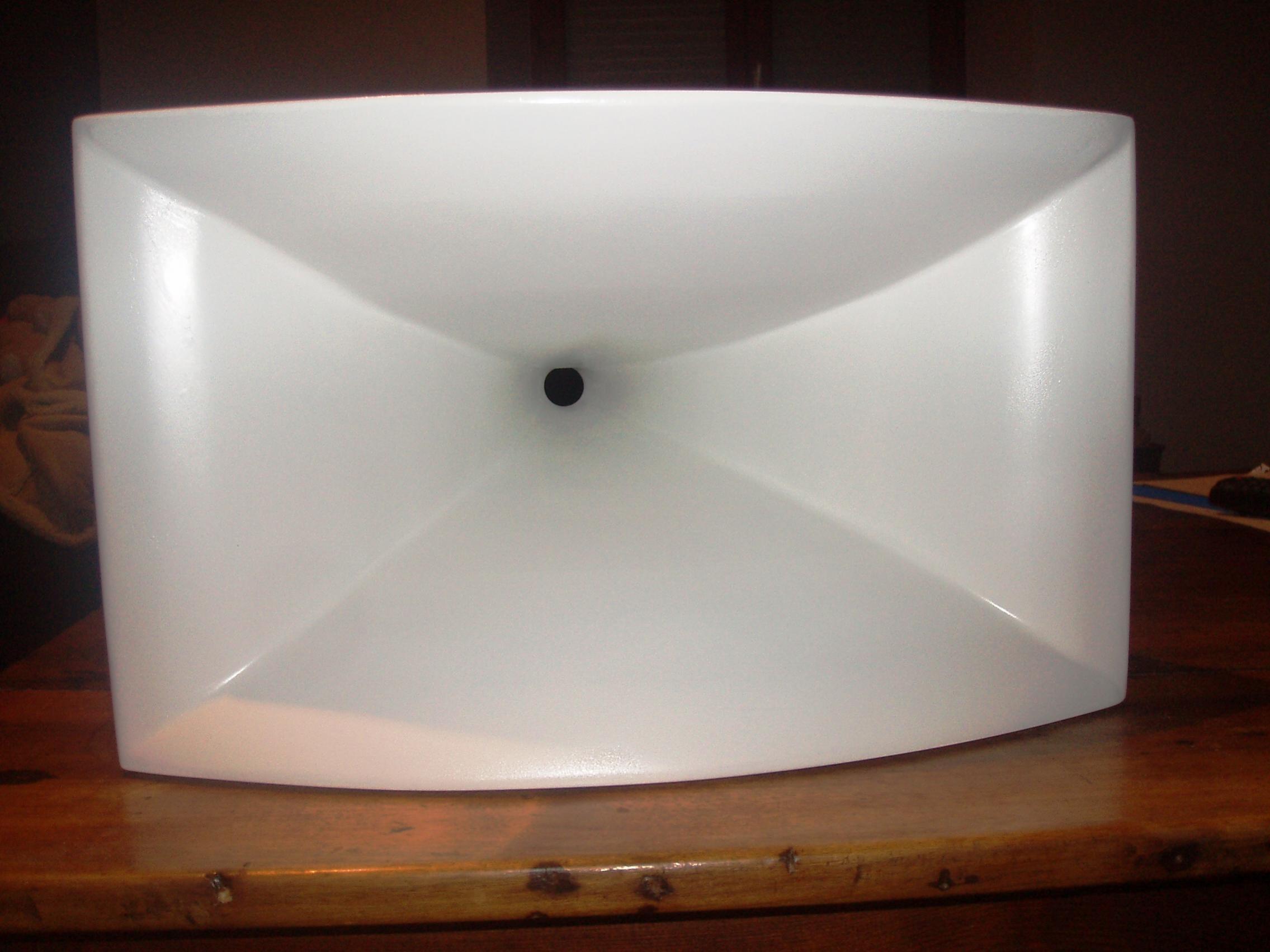
@ docali, you've pretty much nailed it, I guess.
@ docali, you've pretty much nailed it, I guess.
Its a jbl 2386... at 1 meter I can only presume....
........or any other radial expo. 😉
GM
- Home
- Loudspeakers
- Multi-Way
- Is it possible to cover the whole spectrum, high SPL, low distortion with a 2-way?
